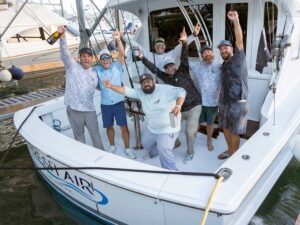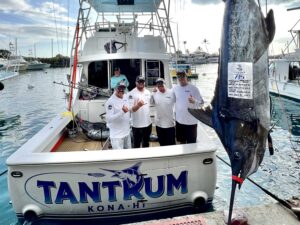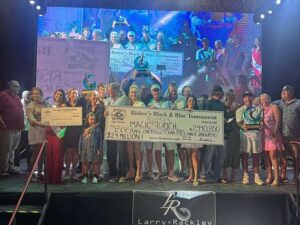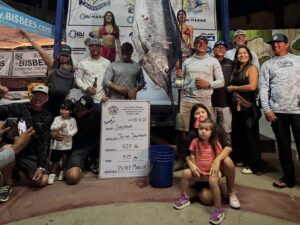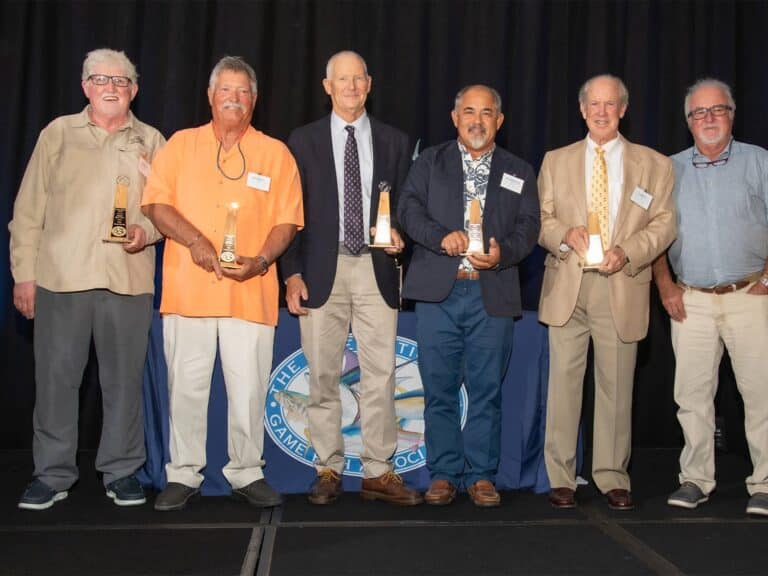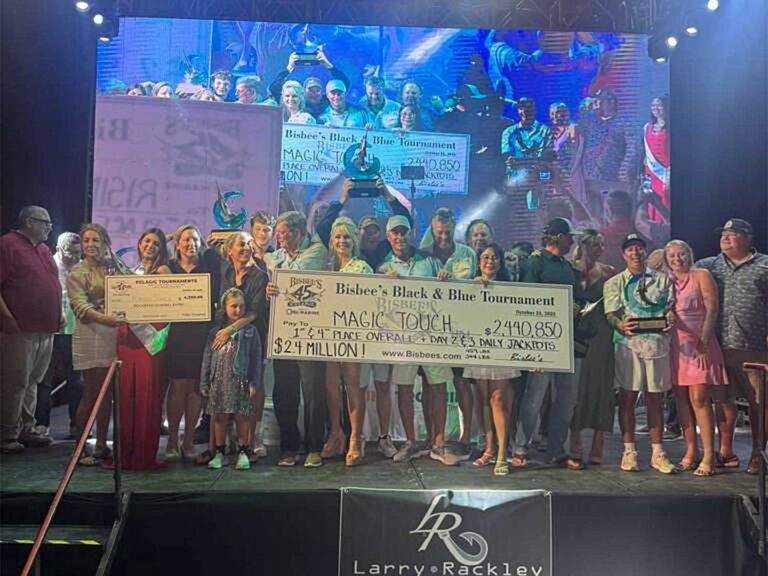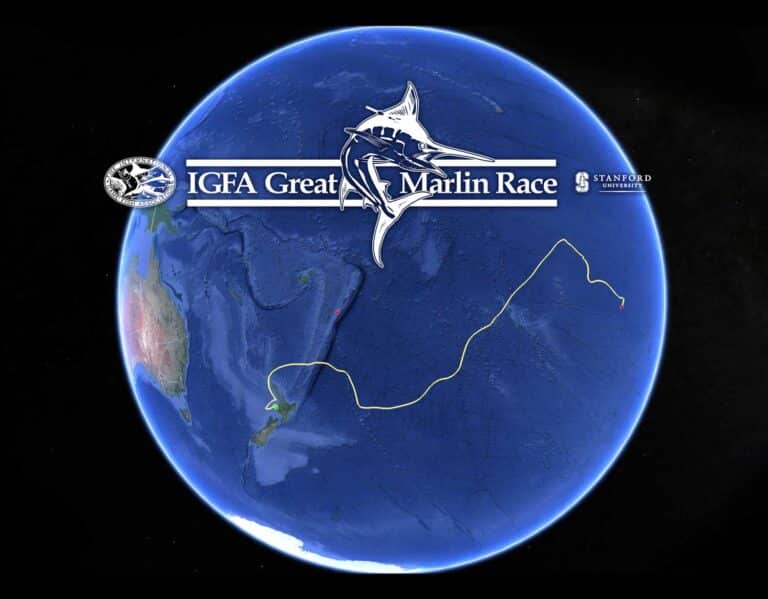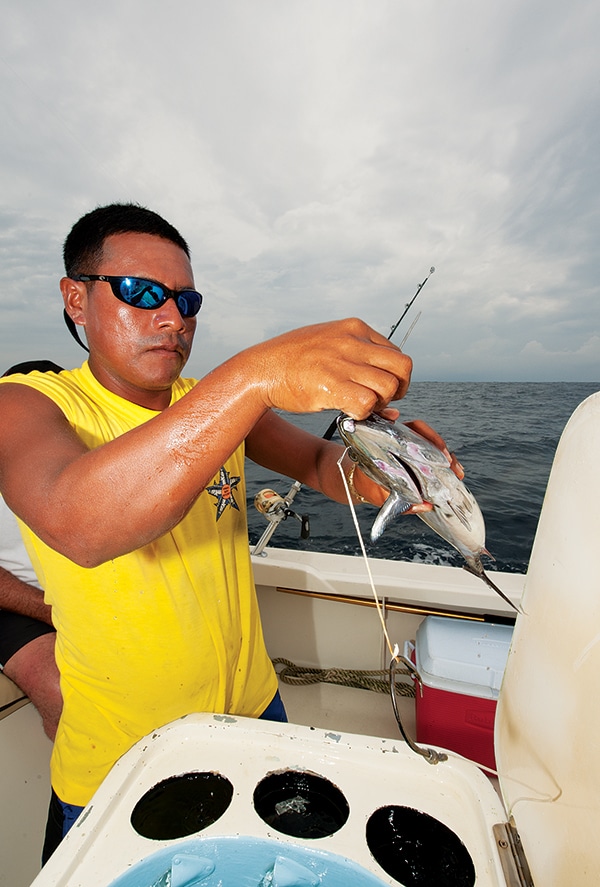
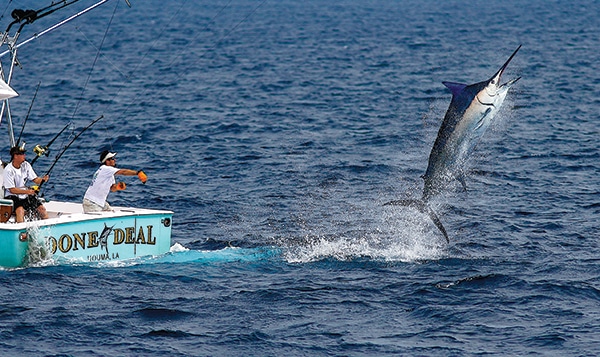
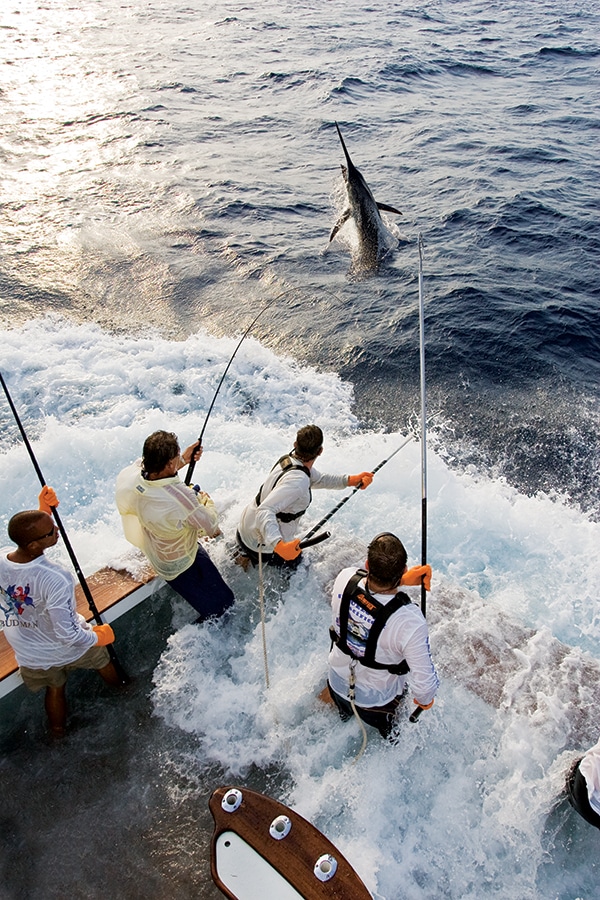
**
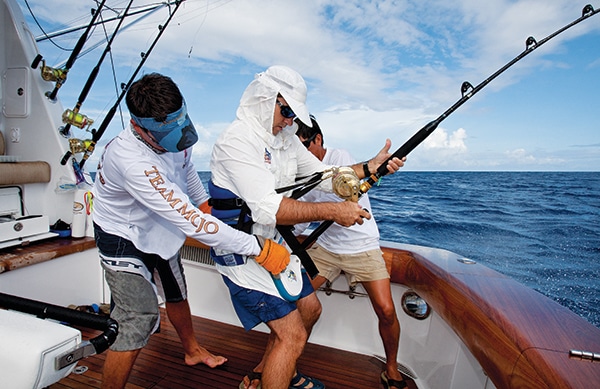
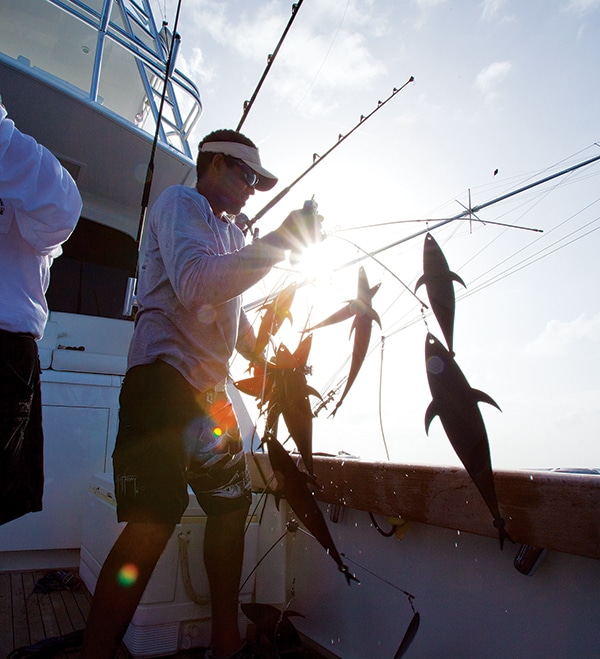
It’s a time-honored stereotype: the grizzled old captain at the helm, the well-wrinkled sunburned face, maybe a shock of white hair topped with a faded ball cap from a long-forgotten marina. He’s been at sea for so long he can remember when Moby Dick was just a minnow and the Dead Sea was barely sick. He’s navigated hundreds of miles offshore with just a fistful of paper charts and an old Ritchie compass and seen blue marlin as big as school buses. He’s one of a kind and slowly, but reluctantly, beginning to fade.
We often hear that “there’s no one to pick up the slack” or “there are not enough young people getting into the sport.” But is that really true? If you hang around this sport long enough, you start to see that there is indeed a new crop of skippers climbing the ladder and doing well. While there are far too many to cover individually, here are profiles and tips from some of the hottest young skippers in the business -— because we all know that from time to time, even old dogs can pick up a few new tricks.
Baiting Up on the Gulf Coast
Growing up on the Gulf of Mexico, Capt. Jason Buck has wanted to captain sport-fishing boats as far back as he can remember. He joined the U.S. Coast Guard right out of high school, putting in four years in Coast Guard blue before earning his captain’s license and running charter boats in his off time out of Venice, Louisiana. In 2007, after nearly a decade working as a first mate, Buck got the opportunity to run Done Deal, a 56-foot Viking owned by Jon Gonsoulin out of Houma, Louisiana.
In 2012, the 38-year-old led the Done Deal team to one of the strongest seasons in the Gulf in recent memory: first-place blue marlin in the Emerald Coast Blue Marlin Classic at Sandestin, winner of the Gulf of Mexico Triple Crown Championship, first-place catch-and-release team in the Mobile Big Game Fishing Club Memorial Day Tournament, second-place blue marlin in the Mississippi Gulf Coast Billfish Classic, second-place catch-and-release team in the White Marlin Shootout, and the list goes on. When asked about the team’s success, Buck referred to one of the key tricks in his bag: live baiting. “There’s no denying its effectiveness in certain situations,” he says. “If you see a blue marlin chasing tuna, that may be all he’s interested in eating. There’s no better way to get the bite than to match the hatch. If the bait is there, we’ll put the effort into live baiting.”
To get the live-bait business down right, Buck began by outfitting the boat with a set of homemade tuna tubes. Buck made the first set of tubes on Done Deal from PVC pipe. “They were ugly; they leaked, and I don’t know how many tubes of 5200 I squeezed into them,” Buck says with a laugh, “but they worked when it counted. I made the next set out of fiberglass, and they performed a lot better. Now, we can keep a 20-pound tuna happy for hours.”
He says the real key to keeping frisky live baits comes down to the pumps and their placement. “The best thing to have is too much water flow, where you can vent the overflow and then valve down each tube individually,” he says. “There are a lot of numbers thrown around out there on what a fish needs in terms of water flow, but just as critical is the installation. The location of the pump, the through-hull location and how far the pump has to push water -— all those are important things to keep in mind.”
Live baiting in the Gulf does have its drawbacks, though. “Using live baits can be hot, slow and boring. It requires constant attention,” Buck says. “If somebody is beating up the white marlin trolling dink baits, it’s going to be hard to beat them on release points looking for one blue marlin. Also, there have been times when we’ve been live baiting an area when another boat shows up and makes it happen on a lure. But if you’re looking for one big bite in the Gulf of Mexico, pulling a big live bait can definitely pay off.”
East Meets West
Like most professional captains, Capt. Josh Ruskey grew up around boats. His father worked as a charter-boat mate out of Ocean City, Maryland, so as a teenager, Ruskey would go to sea with his dad, rigging baits, washing the boat and doing the typical grunt work. By age 20, he was a full-time traveling mate, working out of Stuart, Florida, during the winter and splitting time between Oregon Inlet in North Carolina and Ocean City in the summer. The 32-year-old ran a 48-foot Ocean called Crush Em in Los Suenos, Costa Rica, and he took the helm of a Viking 58 called Warrior in Ocean City this past summer.
During his relatively short time at the helm, Ruskey has enjoyed some notable moments. Winning more than $680,000 in the 2005 Big Rock Blue Marlin Tournament at the helm of Size Matters —__ his first captain’s job — certainly counts as one of his personal highlights, as well as winning in the 2011 Ocean City Tuna Tournament and finishing a second-place in the first leg of the 2012 Los Suenos Signature Billfish Series. In February 2012, his team released 10 blue marlin in one day on Crush Em, so his Pacific experience isn’t limited to just sailfish.
So what does Ruskey bring to the table in terms of fishing the Atlantic versus the Pacific? “The first thing I learned when we made the transition to Costa Rica from the East Coast was dredge fishing,” he says. “When I first got to Los Suenos in the winter of 2006, nobody was using them down here, but I had friends that said, ‘Always pull a dredge.’ And it paid off for us. Now, every boat fishing competitively is pulling dredges, and it’s making a huge difference.”
He also says that being a teacher is as important as fishing. “We have a lot of people who fish with us in Costa Rica to gain experience, to become better anglers,” he says. “It’s our job to teach them correctly. It doesn’t do any good for the captain to get 30 or 40 bites a day if your anglers are only catching five. You need to become a better teacher at that point.”
Ruskey points out that getting a lot of shots at fish works the same for the captains too. “Look at the East Coast guys like Jon Duffie and the Oregon Inlet boats that fish Mexico in the wintertime. They get a lot of practice fishing year-round, so when the bite turns on for a few weeks at home, they’re really on top of their games,” he says. “They can make the most of it and pile up some big numbers.” To get better you need to see more fish.
Ruskey cites his aggressiveness and competitive drive as advantages too. “I always tell people who fish with us that I want to catch [fish] worse than they do — I want to catch every fish we see, and I want to fish every day that I can.”
Teaming Up for Success
When you see a young captain at the helm of a private boat, you may assume that he or she is the owner’s child. But it would be a mistake to confuse the family relationship with a lack of experience, at least when it comes to Capt. Billy Chase “BC” Angel. At just 28 years old, he’s been running the 63-foot F&S Sea Angel, owned by his mom and dad, for six years now, fishing throughout Central America from its home port in Los Suenos, Costa Rica. Angel got his start as a mate at just 15, working in the Bahamas and elsewhere. He won his first marlin tournament in Freeport, Texas, in 1999 and was the top angler in a Bahamas Billfish Championship tournament the following year.
He fished commercially out of Key West with Capt. John Starke for a season before heading south to Costa Rica, first as a mate and then as captain. He has fished full time there for eight seasons after earning his license. Last year, the Sea Angel team headed north to Cabo San Lucas, Mexico, where it finished second in Bisbee’s Los Cabos tournament and was the first-place catch-and-release team in the Bisbee’s Black and Blue tournament. Not a bad result considering Angel never fished those waters before. A third-place finish in the second leg of the Los Suenos Signature Billfish Series got the team off to a good start this year as well.
For someone who has run so hard in such a short amount of time, Angel has some surprising guidance. “The best advice for anyone, either an angler or captain, would be to just slow down and pay attention,” he says. “There are some of the best captains and crews in the world fishing right now, so if you just take your time and learn, they will be more than happy to show you how to be successful.”
Angel says that learning from captains like Bubba Carter and John LaGrone in Costa Rica and Sammy Talbert and Steve Lassley in Cabo San Lucas helped speed up his personal learning curve in the Pacific. Anytime you can find a captain like Carter or LaGrone running a charter boat, it’s a good time to hop on. A day on the water with captains like these can shave years off your learning curve.
He also stresses the need to keep your cool behind the wheel. “We fish with my dad and younger brother in the cockpit as anglers, and my mom’s usually with us too, so it doesn’t do me any good to cuss and scream at anyone if we miss a fish,” he says. “You just have to stay calm and remember to have a good time. Even if you’re in a big-money tournament like Bisbee’s, at the end of the day we’re all out there to have fun.” Angel also points out that no one graduates to the captain’s chair and starts winning tournaments right off the bat, which is true with everyone interviewed for this story. In every case, real success took years of experience and hundreds of hours fishing together as a team.
Good Anglers and Mates Count Too
The team aspect is a sentiment that’s echoed by Capt. Rob Moore, skipper of the 70-foot Viking Fa-La-Me. At 42, he’s the oldest of the bunch, but it’s impossible to ignore his team’s achievements. In 2012, the Jupiter, Florida-based Fa-La-Me won not only the Bermuda Triple Crown Billfish Championship but also the title of Bahamas Billfish Champions, an unprecedented achievement that’s never been accomplished in the past by a single team, much less in the same year. However, Moore is quick to point out that it’s a team sport.
“We have a saying that it takes a village to be successful, and that’s the case with our team on the Fa-La-Me,” he says. “The owners have confidence in me to do my job, and I have confidence in my mates and anglers to do theirs.”
Moore also cites a willingness to change tactics as another key to doing well on the water. From trolling ballyhoo on 30s in the Bahamas to breaking out the big guns and lure fishing for granders in Bermuda, “you have to adapt to the situations and have the confidence to know what works,” he says.
There are scores of great young captains on the water today (two more under-40 notables are Capt. Ronnie Fields, currently fishing Cape Verde at the helm of Grey Ingram’s 63 Scarborough Big Oh, and Capt. Ryan Higgins, veteran demo captain for Viking Yachts). So the next time you see a youthful face smiling down from the helm, rest assured that you’re in good hands. The young guns are indeed the next generation of sport-fishing professionals.
